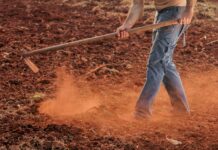Ghana’s cocoa sector is set to benefit from Israel’s Drip Irrigation System. The adoption of the system will help in an all-year round farming. The system, which is also known as trickle irrigation, involves dripping water onto the soil at very low rates from small diameter plastic pipes fitted with outlets called emitters or drippers.
AgroStudies Program
The Israel government came up with an AgroStudies apprenticeship program to benefit approximately 50 Ghanaian students. Among these is Enock Agyemang, who said the drip irrigation system is ideal for the cocoa sector during the dry season. This, he further explains is because Ghana has the fertile lands and the rains. As such, the drip irrigation comes in handy during the dry season.
Agyemang has been assigned to the Danziger Greenhouse Farm with seven other agriculture students from Ghana and other African countries. He also believes the drip system can help create jobs for the teeming unemployed youth.
Drip irrigation is a technique in which water flows through a filter into special drip pipes, with emitters located at different spacing. Water is then distributed through the emitters directly into the soil near the roots. This is done through a special slow-release device.
Advantages
One of the greatest advantages of drip irrigation is water conservation. This is because when compared to other types of irrigation systems, water is more precisely applied to the plant roots. In addition, the drip prevents the spread of many diseases. Drip irrigation is also adaptable to any farmable land.
Drip irrigation is one of Israel’s greatest inventions, credited to a former government official by the name Simcha Blass. Blass later on sold the rights to Netafim. According to Netafim, compared with flood irrigation, drip decreases chances of emission of greenhouse gases in rice and tomatoes.







